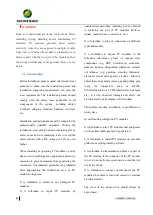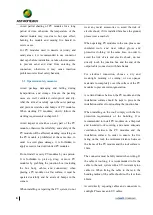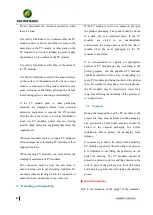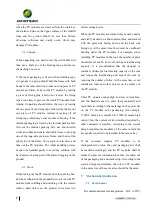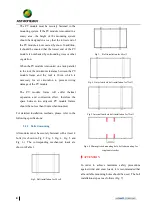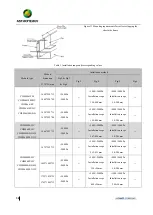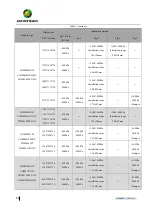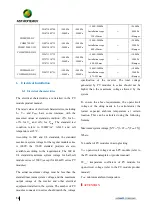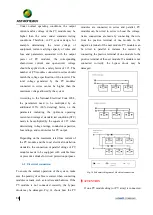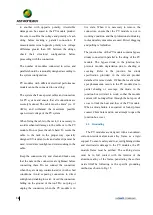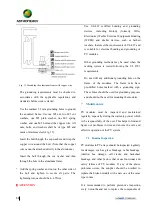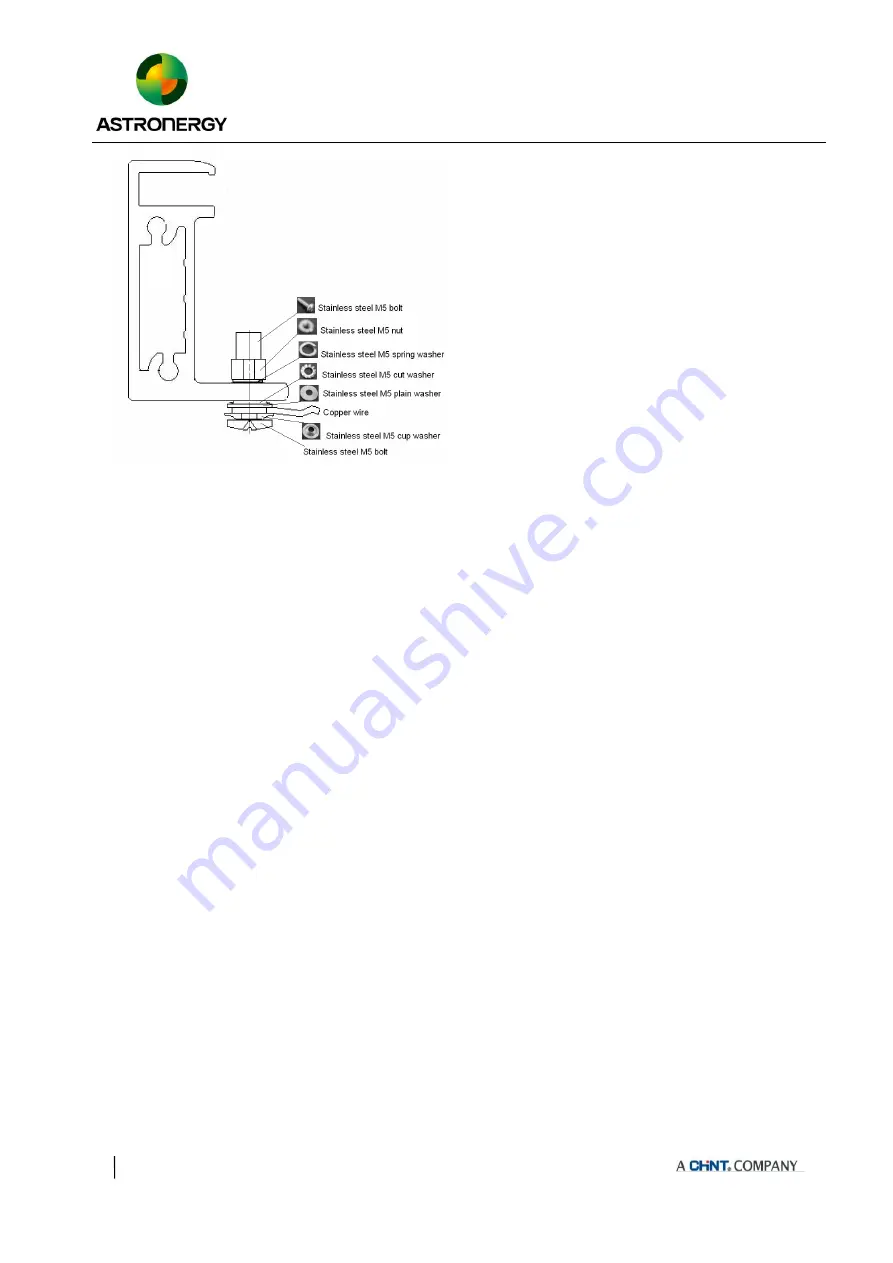
17
Fig. 15 Grounding the aluminum frame with copper
wire
The grounding requirements must be checked in
accordance with the applicable regulations and
standards before work is started.
Use the marked 5.5 mm grounding holes to ground
the anodized frame. Use one M5 nut, two M5 cut
washers, one M5 plain washer, one M5 spring
washer, and one M5 bolt and the copper wire. All
nuts, bolts, and washers shall be of type M5 and
made of stainless steel (Fig. 15).
Insert the bolt through the cup washer and wrap the
copper wire around the bolt. (Note that the copper
wire cannot be attached directly to the aluminum.)
Insert the bolt through the cut washer and then
through the hole in the aluminum frame.
Add the spring washer and nut on the other side of
the bolt and tighten to secure all parts. The
tightening torque should be 4~4.5N•m.
!
ATTENTION
Use UL-467 certified bonding and grounding
devices, including Burndy (formerly Wiley
Electronics) Washer Electrical Equipment Bonding
(WEEB) and similar devices, such as barbed
washers, that meet the requirements of UL-467 and
is suitable for electrical bonding and grounding of
PV modules.
Other grounding methods may be used when the
racking system is tested following the UL 2703
requirements.
Do not drill any additional grounding hole on the
frame of the modules. The frame rails have
pre-drilled holes marked with a grounding sign.
These holes should be used for grounding purposes
and should not be used for mounting the modules.
7
Maintenance
PV modules must be inspected and maintained
regularly, especially during the warranty period, which
is the responsibility of the user. This helps to find and
figure out problems in time and ensure the safe and
effective operation of the PV system.
7.1
Routine Inspection
PV modules in PV arrays should be inspected regularly
for damages, such as glass breakage, cable breakage,
junction box damage, cell cracks, and backsheet
breakage and other factors that cause functional and
safety failures of PV modules. If any of the above
problems occurs, the supplier should be notified to
replace the broken module with a new one of the same
type in time.
It is recommended to perform preventive inspection
every 6 months and not to replace the components of


